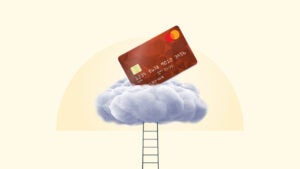Why you should pay your credit card every two weeks




Key takeaways
- Paying your credit card twice a month is good because it allows you to check in with your spending and get ahead of your bills.
- If you’re carrying credit card debt, making a credit card payment every other week could also save you money on interest.
- Even if you aren’t carrying credit card debt, making a credit card payment every other week could reduce your credit utilization ratio and improve your credit score.
I’ve gotten into the habit of paying my credit cards off every two weeks, and I recommend this strategy to everyone. While you should always strive to pay your bills in full to avoid interest, this approach is even more impactful for cardholders who carry balances.
If you carry credit card debt from month to month, you don’t have a grace period. In other words, interest is accumulating every single day. There are slightly different ways that card issuers calculate this — it’s often a daily periodic interest rate applied to your daily balance — but the main point is that if you have credit card debt, interest is constantly accruing. That’s why paying sooner is often better than waiting until later.
If you pay your entire credit card statement balance, then the next month you should benefit from a grace period. The Credit CARD Act mandates that if issuers have grace periods, and they typically do, then they must last at least 21 days. For example, one of my credit cards emailed me a statement on Dec. 8. Since I paid the entire balance the previous month, I won’t be charged any interest if I pay in full by Jan. 5.
Cardholders who pay in full can ride the float even longer, depending on when they made their purchases. Expanding on my previous example, if I made a purchase on Dec. 9, that bill wouldn’t even arrive until Jan. 8, and I’d be interest-free until Feb. 5 (again, assuming I paid in full the previous month).
Still, I like paying off my credit cards much more often than that.
Extra payments can help keep your credit utilization low
I’ve turned my credit card payments into a payday ritual — every other Friday. One tangible benefit is a lower credit utilization ratio, which helps my credit score. A credit utilization ratio is how much credit you’re using divided by your total credit limit. It’s calculated per card and across all your cards combined. A lot of people don’t realize they might have a high credit utilization ratio even if they pay their entire statement balances each month.
Credit utilization is usually reported on your statement date, so if you made $4,000 in charges against a $5,000 limit, you have a very high 80 percent utilization ratio — even if you pay the whole amount before interest is charged. It’s usually best to keep that ratio under 30 percent, and even lower is better. Many people with excellent credit scores keep their utilization under 10 percent. Making an extra mid-month payment or two is a helpful way to accomplish that.
Extra payments can help you monitor your budget
If your cards are “out of sight, out of mind,” you might have a nasty surprise waiting for you when the statement arrives. That’s especially true during the end of the year with holiday shopping, travel, parties and so forth. Even if you don’t like the extra midmonth payment idea, at the very least, you should be logging in to your credit card issuers’ apps and websites every week or so to keep tabs on your spending. Look for fraudulent transactions while you’re at it.
Credit and debit cards can help you map out your spending habits because they provide a digital or paper trail. When we spend cash, sometimes it’s hard to remember where all that money went. And once you know where you’ve been, you’ll be better equipped to set your future course.
Extra payments can help fend off credit card debt
You might be about to fall into credit card debt if you’re able to pay your monthly statement balances in full, but you’re not able to afford the extra charges that you made between the statement close date and your payment date. That’s the difference between the “statement balance” and the “current balance” you see when you pay your credit card bills online.
If you can pay the statement balance but not the current balance, you’re living close to the edge. You’re essentially depending on your next paycheck to fund the purchases you’ve already made. An every-other-week payment routine gets you out of this rut. You get ahead of your bills rather than playing catch-up all the time. Plus, becoming more conscious about your money can help you avoid overspending and lets you instead focus on what’s most important in your life.
What to do if you’re already in credit card debt
If you’ve already found yourself in debt and don’t know how to stop the snowball effect, consider these options to start:
- Apply for a 0 percent intro APR balance transfer card — these offers last as long as 21 months and can help stop the interest build-up
- Take on a side hustle
- Sell unneeded possessions
Do whatever you can to cut your expenses, or funnel as much extra money toward your credit card debt as you can, as often as you can.
Know that credit card debt is easy to get into and hard to get out of. Interest rates are very high, with today’s average credit card rate sitting at just over 20 percent. If you’re in debt, know that you’re not alone. Forty-eight percent of cardholders are carrying a balance from month to month, and about 53 percent have been in debt for at least a year, according to Bankrate’s 2024 Credit Card Debt Survey.
The bottom line
While you only need to make one monthly credit card payment to maintain a good credit score, paying your credit card twice a month can have many additional benefits. If you are carrying a balance, then making credit card payments every other week can help reduce your interest charges. Plus, making multiple credit card payments can help lower your credit utilization ratio and improve your credit score. You can also use your midmonth credit card payment to check in on your spending history and get ahead of your upcoming bills.
Frequently asked questions about paying your credit card
Why we ask for feedback Your feedback helps us improve our content and services. It takes less than a minute to complete.
Your responses are anonymous and will only be used for improving our website.





